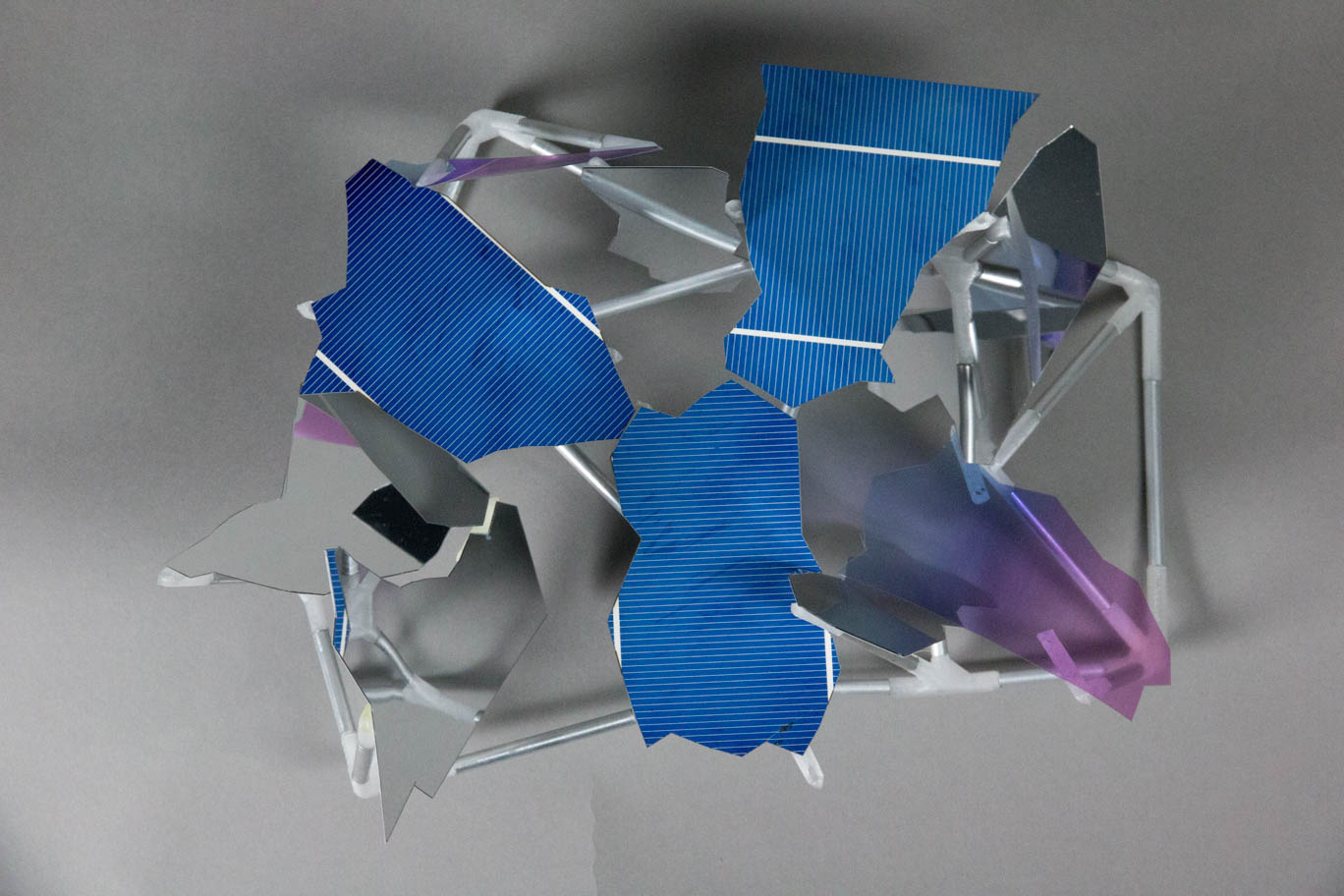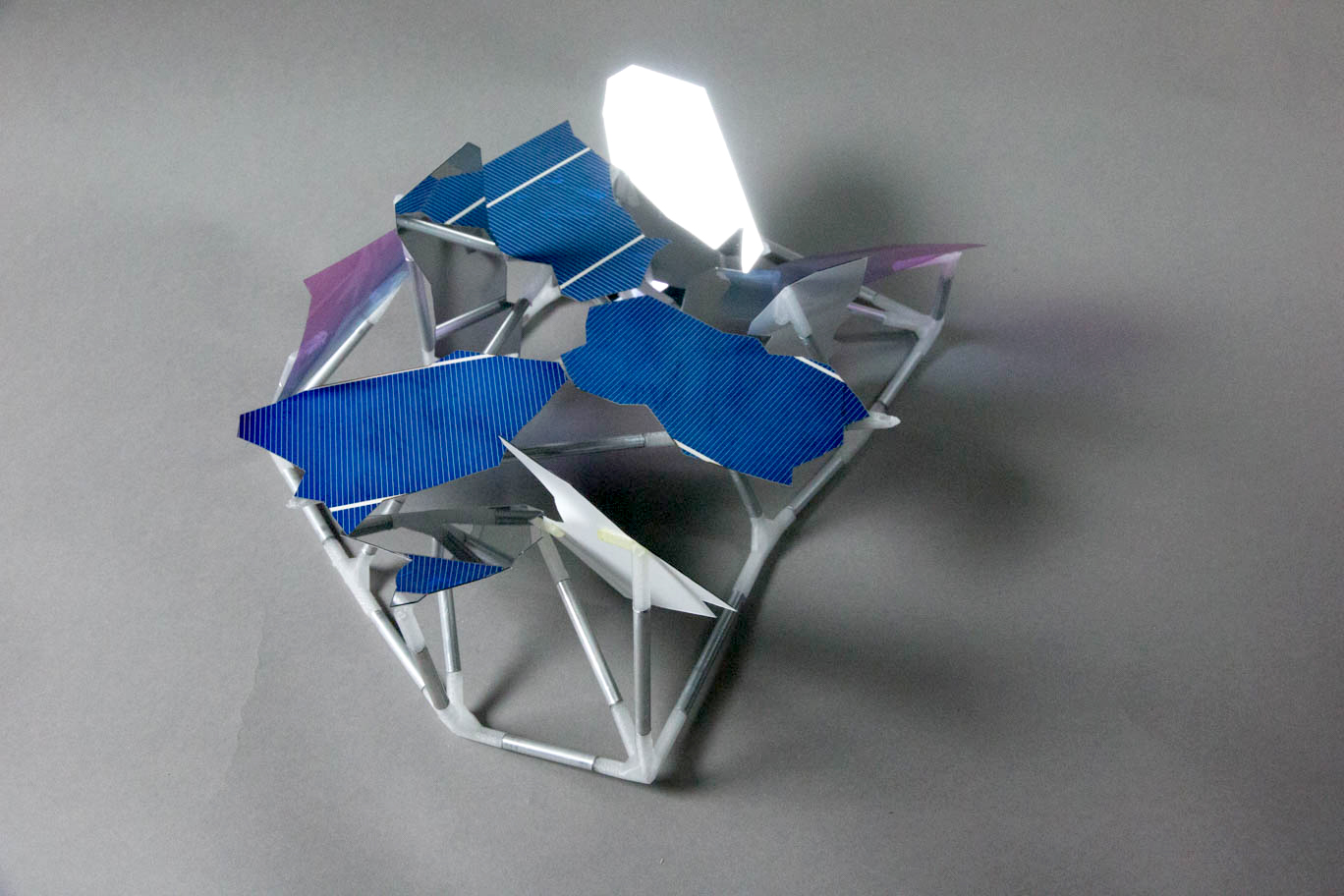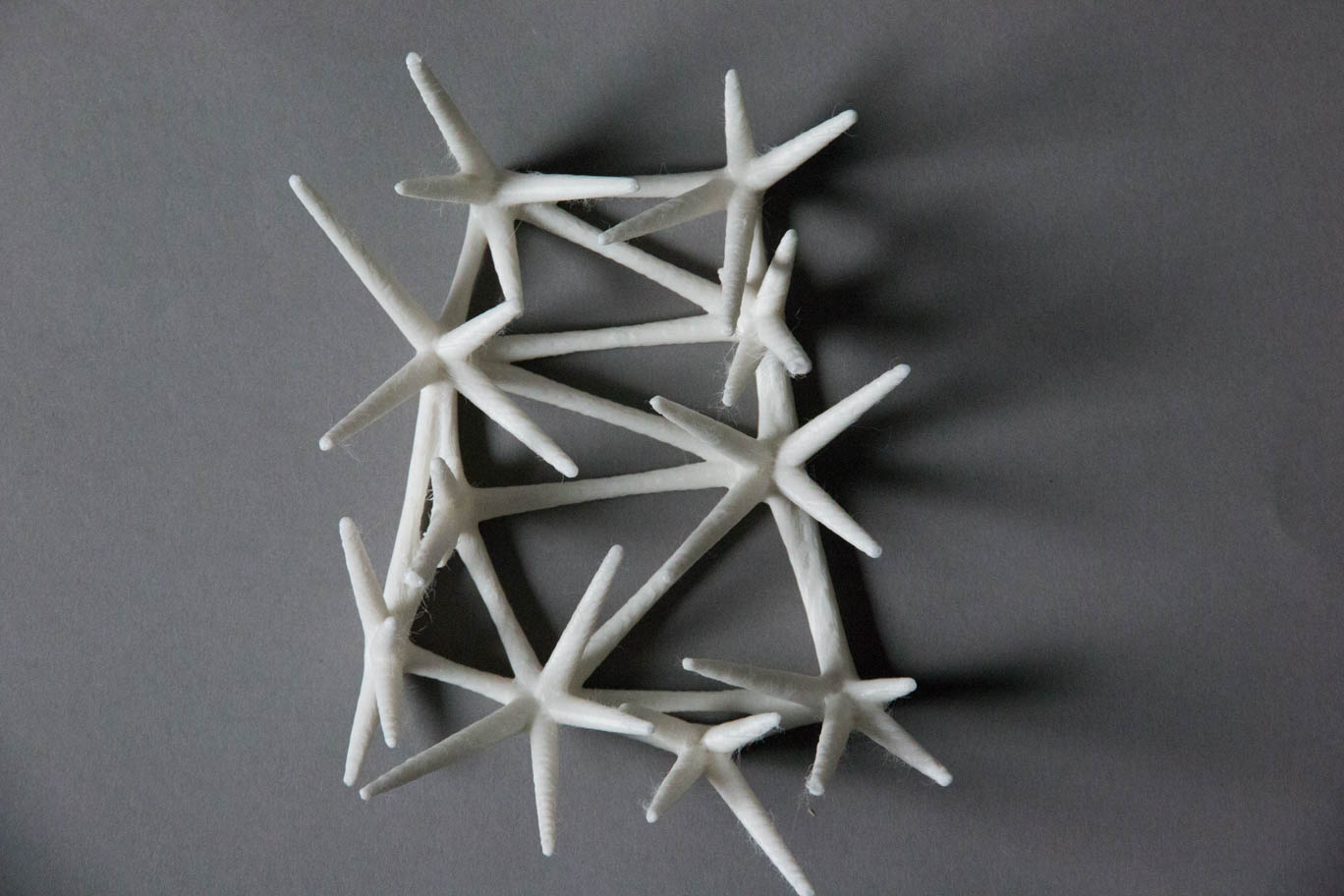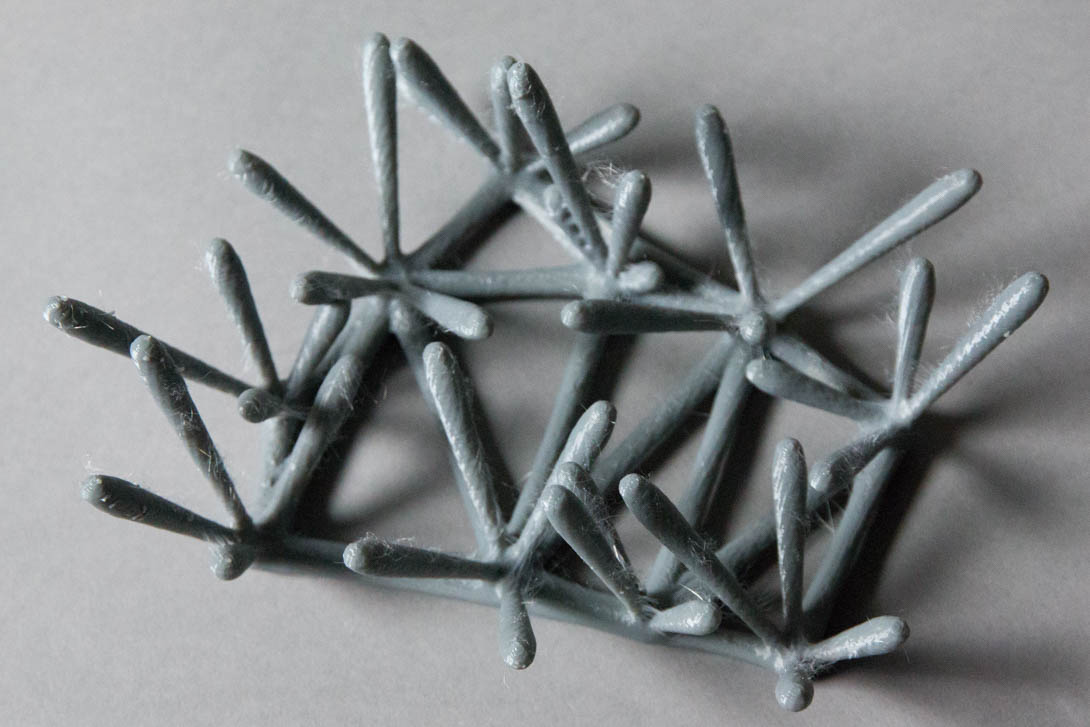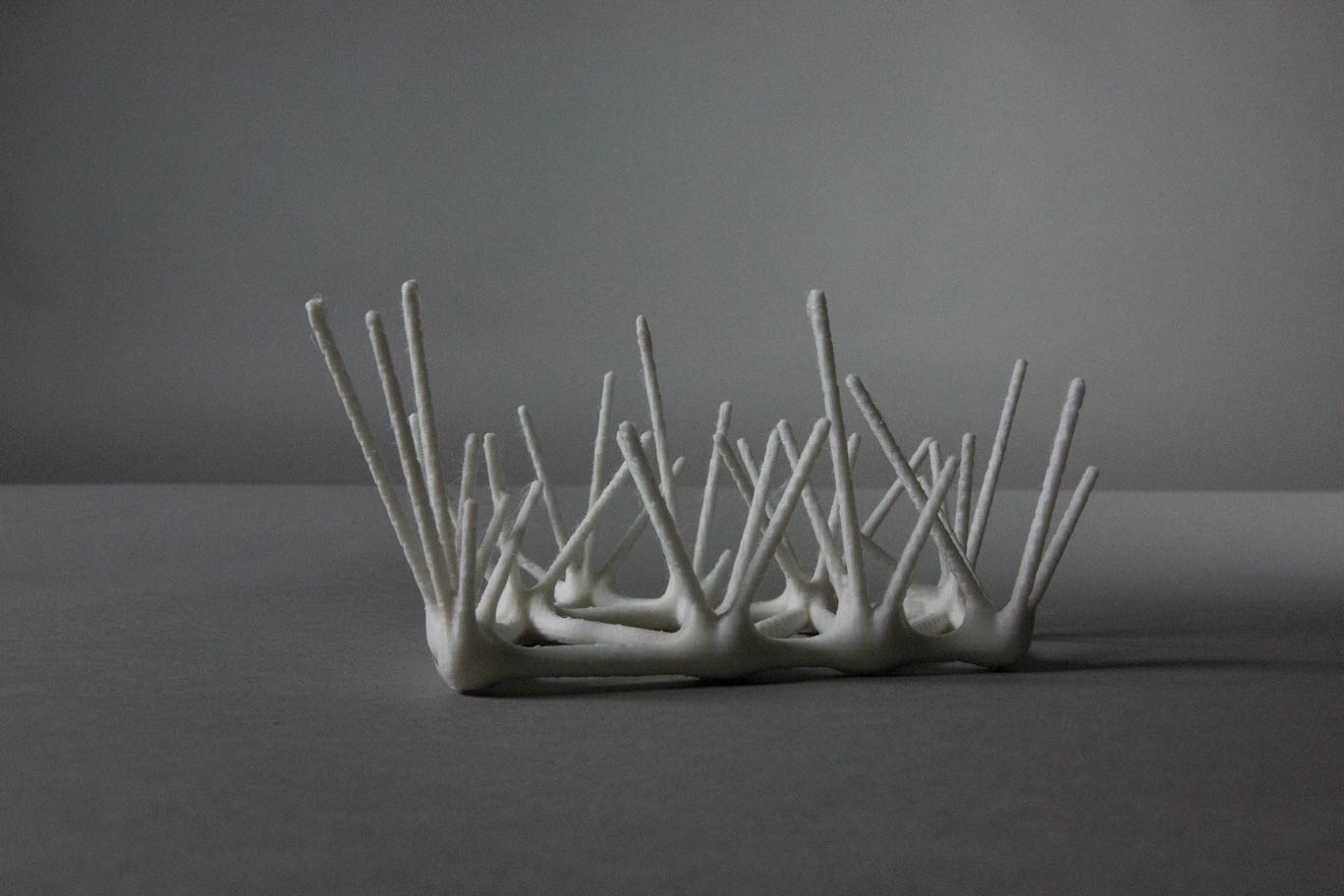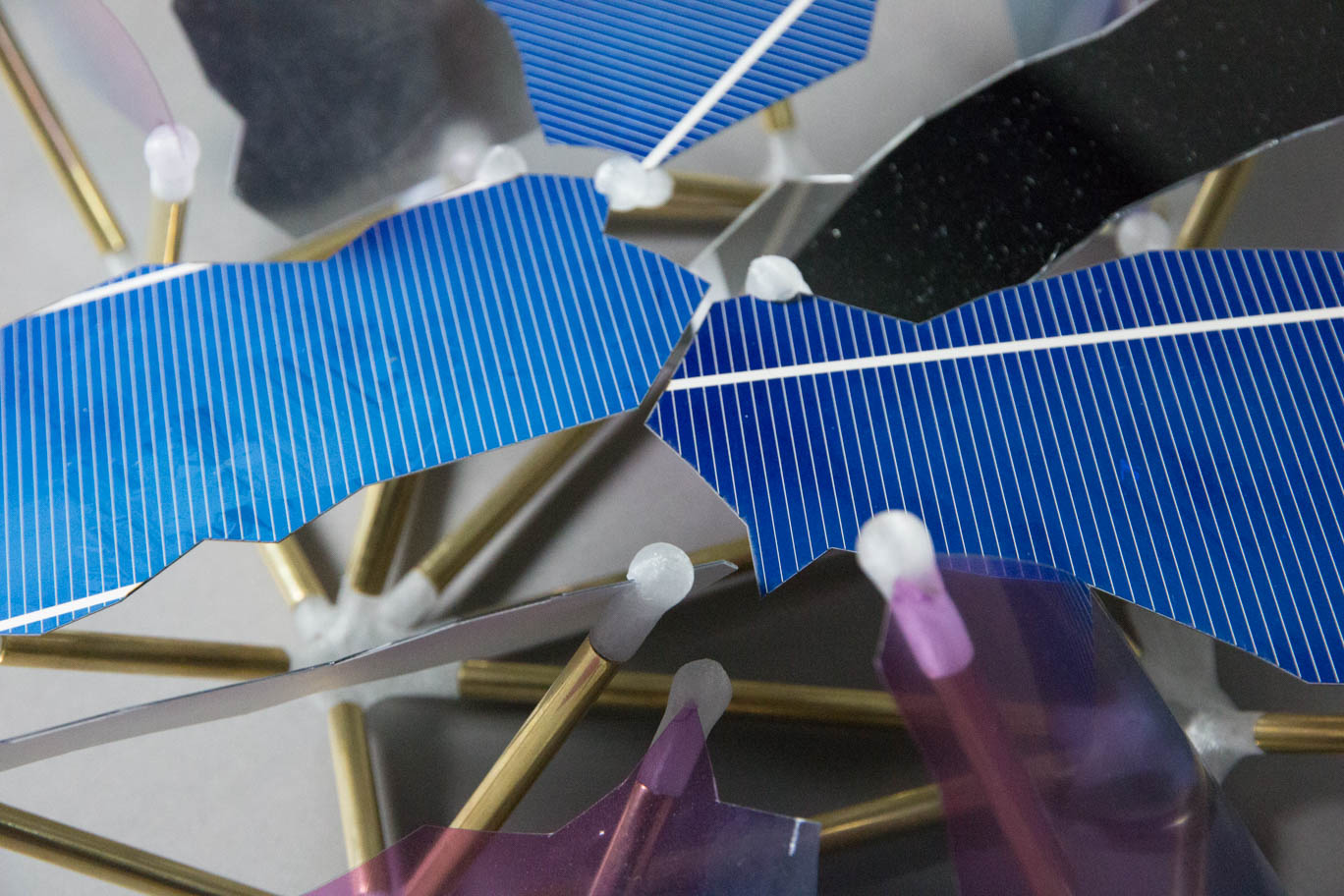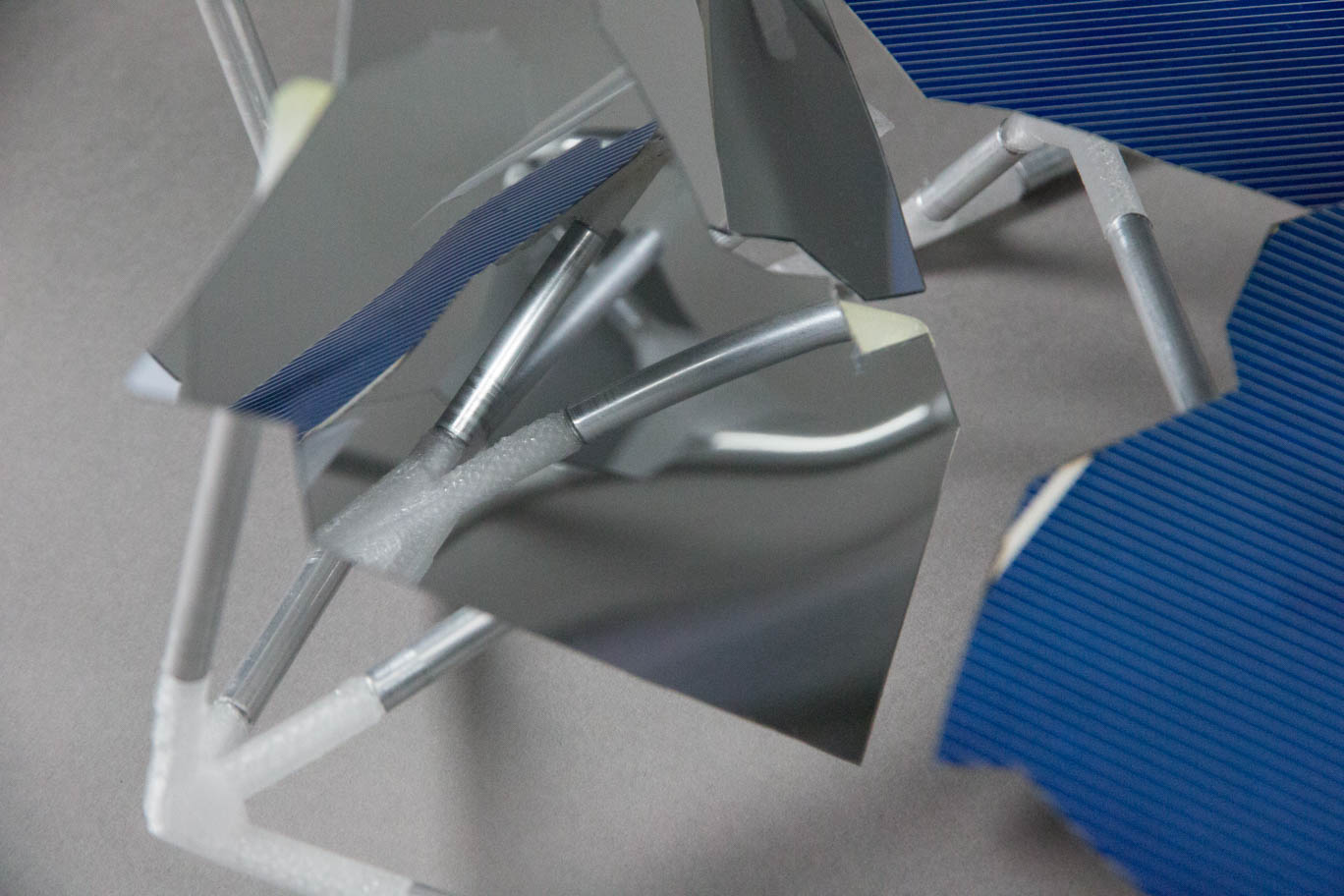Sustainable Architecture & Aesthetics
Emergent Design for High Performance Solar Panels Cornell University Architecture, Art and Planning
Cornell University Architecture, Art and Planning
Faculty: Jenny Sabin
Team: Allison Bernett, Evan McDowell,Ian Pica Limbaseanu,
Kevin Huberty, Mohammed Mansoor, Omar Dairi
Degree: M.S. AAD
Semester: Fall 2018
Duration: 1 Semester
Software: Rhino, Grasshopper, DIVA, Vray, Photoshop, Illustrator
Site : Ithaca, New York, NY
Type : Architecture Research, Solar Panels, Sustainable design, Heliotropism,
Bio - Architecture, Matter Design Computation.

Aleksandra Sapala, Adam Runions, Anne-Lise Routier-Kierzkowska, Mainak Das Gupta, Lilan Hong, Hugo Hofhuis, Stéphane Verger, Gabriella Mosca, Chun-Biu Li, Angela Hay, Olivier Hamant, Adrienne HK Roeder, Miltos Tsiantis, Przemyslaw Prusinkiewicz, Richard S Smith https://elifesciences.org/articles/32794#fig2
For Global form
Three definitions of “optimal” global forms for solar panels.-
Sunlight hits solar panels at angle of 90° as often as possible.
-
Solar irradiance (power per unit area) is maximized.
- Light is reflected onto PV’s that would not otherwise reach them.
Evaluation Methods
-
Radiative heating and cooling/PV efficiency metrics
-
Daylighting simulation for interior and exterior
-
Ray tracing visualization
Variables
- Solar Panels
-
Black-body emissivity
- Temperature coefficient
- Shading Geometry
Taking into account site & context specific factors, simulations give accurate pseudo-real world data that can be used with simple models for solar absorption and loss to calculate an equilibrium temperature which can then be factored into an efficiency calculation.
Ray Tracing Visualization
Taking into account site & context specific factors, and give accurate pseudo-real world simulation that can be used with simple models for Reflection of solar rays and visualize their behavior with surface materials and PVs.

Sub division
Normal-Dependent Subdivision

Specialization
Wiring Optimization
Cell profile

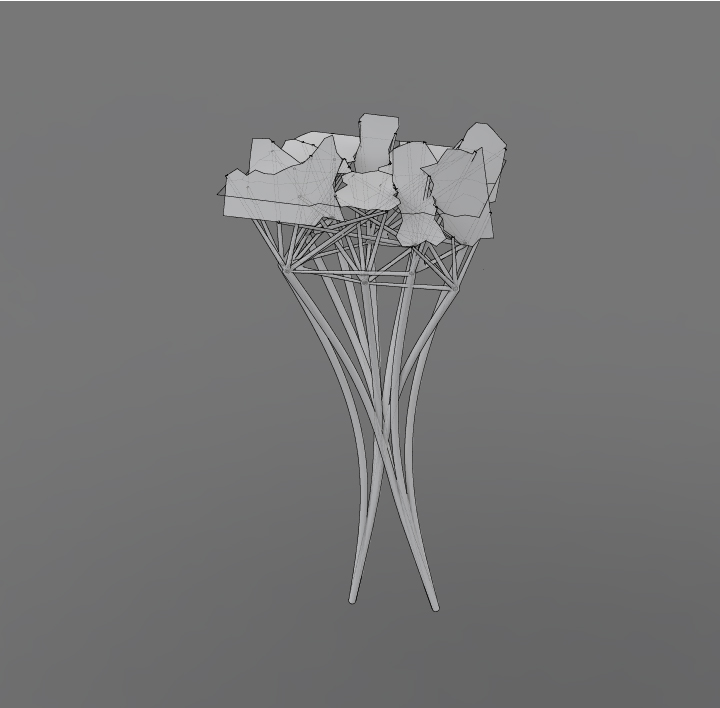
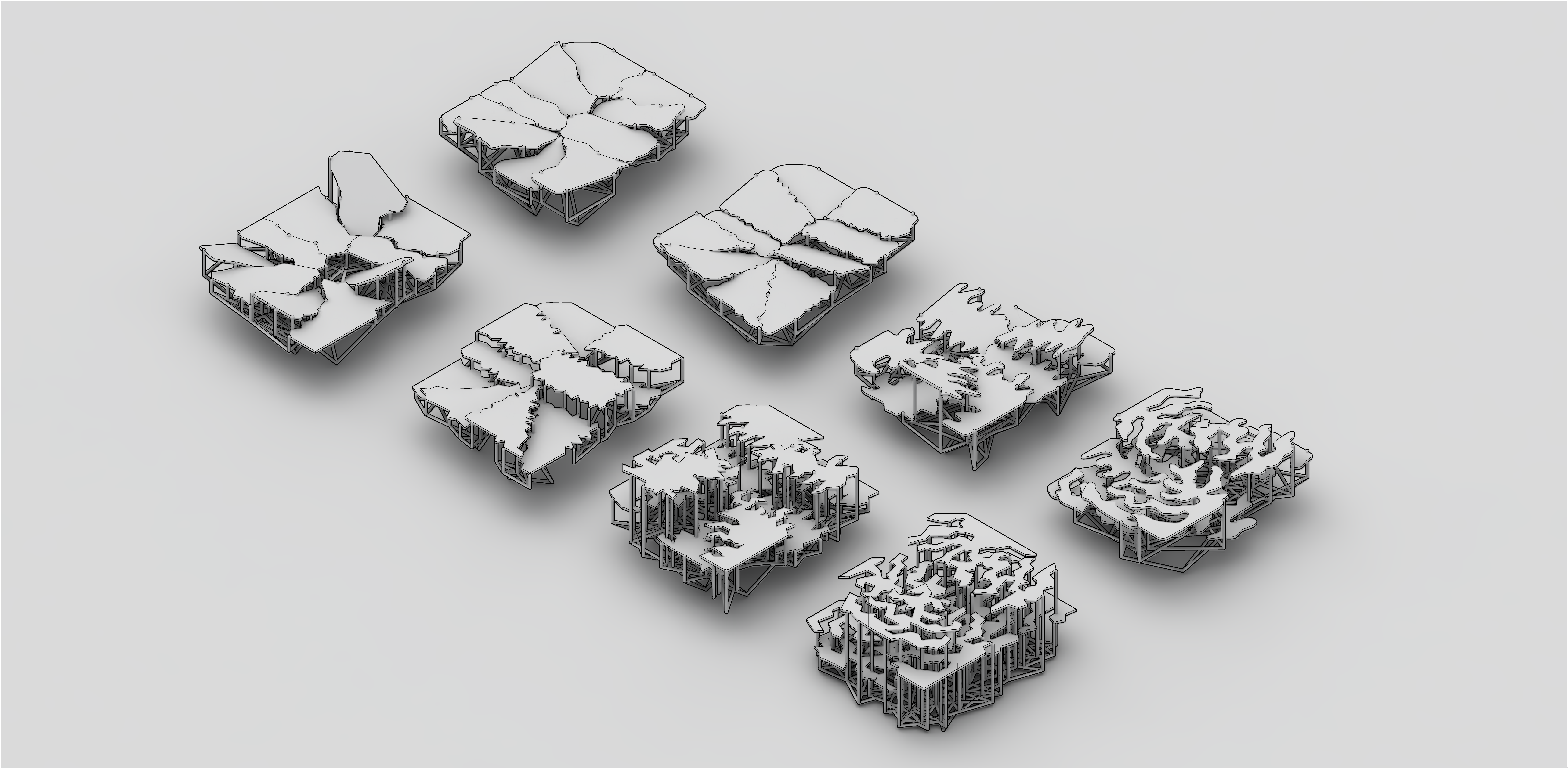
Abstract
Problem
The task of designing solar panels is traditionally understood as an engineering initiative, not an architectural problem. This causes solar panel design to ignore many spatial and aesthetic opportunities inherent in the concept of a building as a solar energy-collecting apparatus.
Proposal
We will design an architecture celebrating solar panel technology, with the goal of raising public awareness and excitement about renewable energy as a foundation of architectural design. Looking to biological precedents and basic astronomical principles, we will elevate the role of architecture in converting solar radiation into electricity.

Sub Division
Heliotropic response
-
Investigated chemical mechanisms of heliotropic growth in sunflowers and other plants
-
The heliotropic response relies on both additive and subtractive forces
-
Analyzed how these changes at the micro scale lead to macro scale form development
- Conceptual relationship between these scalar quantities and the PV cell to pavilion scales
Cell profile
Puzzle cells
-
Investigates mechanical stresses at the cellular level in plants Attempts to model these stresses
-
Understands that mechanical stress is a driver of cell-shape Morphogenesis
-
Morphogenesis: The origin and development of formal or structural qualities
Step 1: Generate Micro fibril network based on cell start geometry
Step 2: Relax fibril network forces and displace cell perimeter segments based on desired growth type (isotropic, anisotropic)
Step 3: Update cell shapes to find mechanical equilibrium
Step 4: Re-generate Micro-fibril network, update rest-length of cell perimeter segments puzzle cells should appear when cells stop dividing and tissue growth is not primarily in one direction


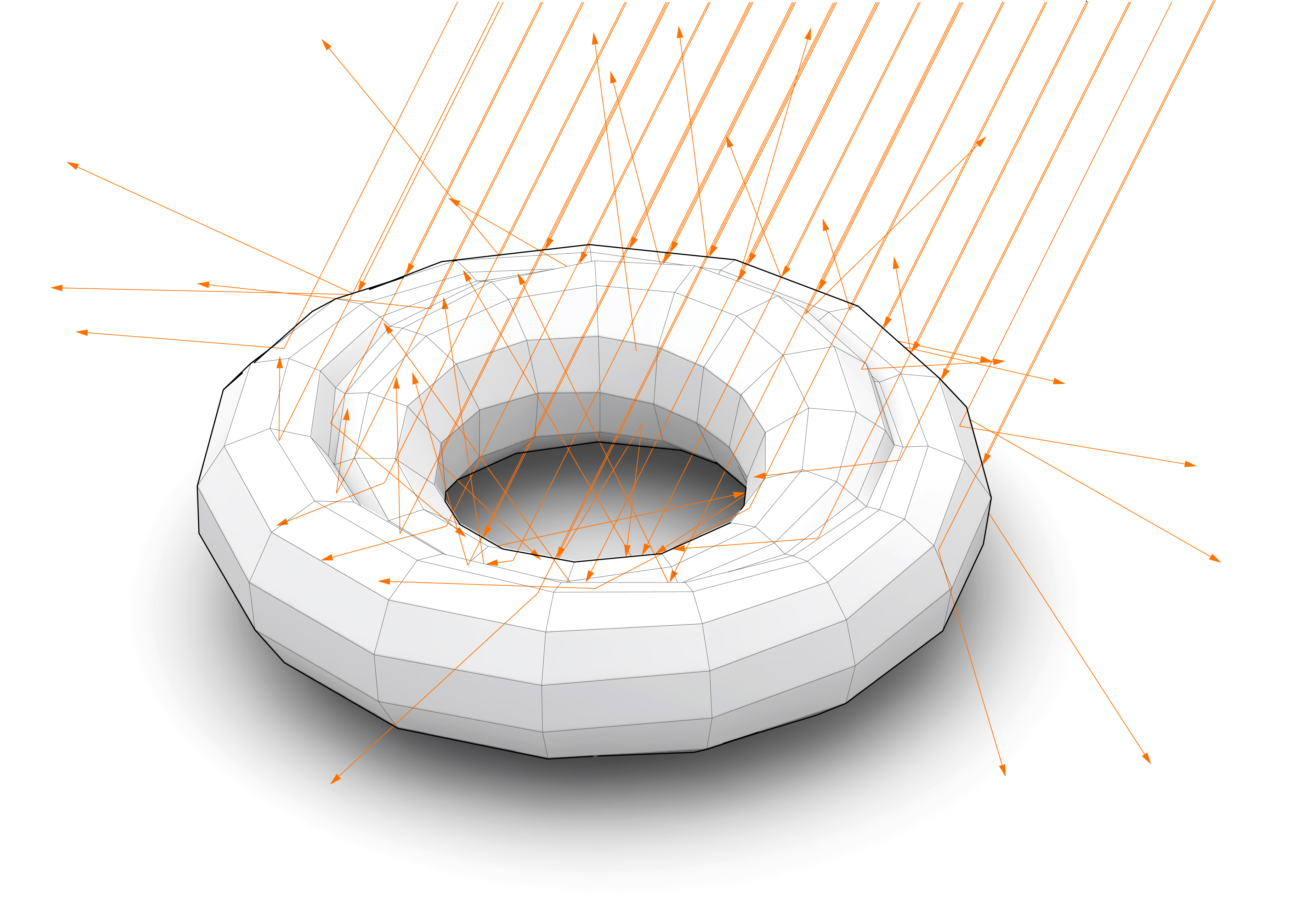


Methods
Equal area cell generated using genome fitness analysis.
Cell profiling based on Puzzle cells script over the equal area profile
Solar Ray-tracing and optimization as a generative tools to develop optimal angles for reflective mirrors and PV Cells








Result

